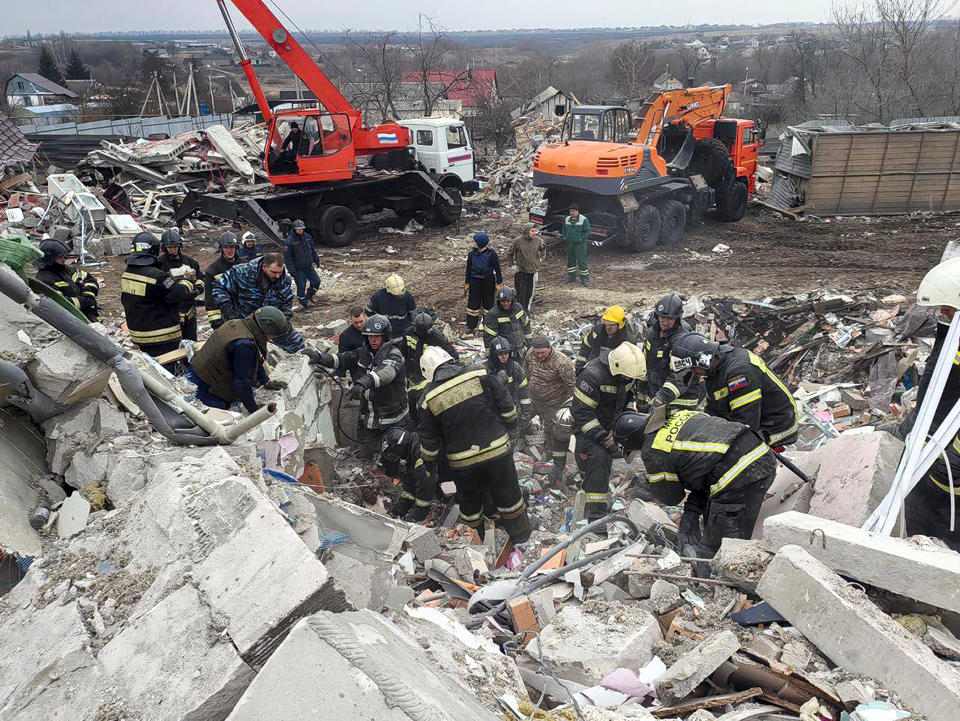Russia’s Belgorod region is under attack again from Ukraine. Why does it keep getting targeted?
Russia’s Belgorod region has come under increasing Ukrainian attacks this month as the invasion by Moscow grinds into its third year.
A look at the region and its role in the war:
WHAT IS THE BELGOROD REGION?
The region of forests, farmland and rolling hills has a 540-kilometer (335-mile) border along Ukraine’s northeastern edge. It has an area of over 27,000 square kilometers (about 10,500 square miles), and has a population of about 1.5 million.
It holds about 40% of Russia's iron ore and other minerals, and is home to several major industrial companies and farms.
The city of Belgorod, the provincial capital with a population of about 340,000, sits only 40 kilometers (25 miles) east of the border, making it an easy target for Ukrainian artillery.
WHAT HAS THE REGION FACED?
The region was one staging ground for the invasion by Russia in February 2022. It has come under regular Ukrainian attacks ever since Russian forces retreated there from northeastern Ukraine early in the war under the brunt of a counteroffensive by Kyiv.
An attack on the city of Belgorod on Dec. 30 marked a bloody escalation. A barrage of rockets struck on a holiday weekend as residents celebrated the New Year. Officials said 25 people were killed, including five children, and over 100 were injured.
The bloodshed also forced officials to cancel celebrations for the Orthodox feast of Epiphany on Jan. 19.
Regular rocket and drone strikes have continued since then. The area can be struck by relatively simple and mobile weapons such as multiple rocket launchers from forests on the Ukrainian side.
Border villages have faced repeated incursions backed by tanks, armored infantry vehicles and other heavy weapons. Russia claimed that it has repelled the attacks and inflicted heavy losses.
The repeated Ukrainian attacks have dealt a heavy blow to President Vladimir Putin’s attempts to reassure Russians that their daily lives are largely untouched by the war.
Russian border villages in the region have been targeted sporadically during the war by Ukrainian artillery fire, rockets, mortar shells and drones launched from dense forests, where they are hard to detect.
WHAT WAS PUTIN'S REACTION?
The cross-border shelling and incursions took place as Putin has cemented his grip on power for another six years in a highly orchestrated election this month that followed a sweeping crackdown on dissent.
Putin says the attacks are an attempt to scare residents. “I’m sure that our people, the people of Russia, will respond to that with even greater cohesion,” he said last week.
He vowed the Ukrainian cross-border attacks “won’t go unpunished,” venting particular anger at pro-Kyiv Russians who joined Ukrainian troops in the incursions, describing them as traitors who will face imminent death.
HOW HAVE BELGOROD OFFICIALS RESPONDED?
After the New Year weekend attack, authorities expanded a network of shelters in Belgorod and reinforced bus stops with concrete blocks and sandbags. The regional government also provided assistance to those wanting to leave the city and other border areas temporarily.
Belgorod Gov. Vyacheslav Gladkov this week ordered the evacuation of 9,000 children from the region and ordered schools closed through Friday in Belgorod and other areas near the border. Universities in the area will switch to remote learning, and clubs and cultural and sports institutions will close.
Military checkpoints were set up to control entry to six border villages.
WHAT DO UKRAINIAN OFFICIALS SAY?
Ukrainian officials rarely comment on attacks inside Russia, but they emphasize Kyiv's right to use all means to counter Moscow’s aggression.
Ukrainian Foreign Minister Dmytro Kuleba said Tuesday that any military action there was “the direct consequence of the illegal and unprovoked aggression of Russia against Ukraine.”
___
Follow AP's coverage of the war in Ukraine at https://apnews.com/hub/ukraine












